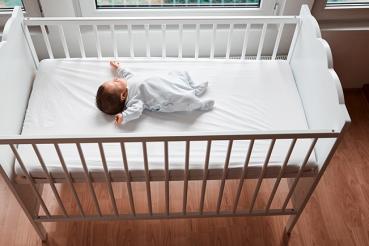With many schools across the Chicago area doing remote learning and kids’ activities and sports limited, kids have experienced the COVID-19 crisis in their own distinct ways.
The good news is that kids are resilient and adaptable — often more so than adults. Still, the sense of loss and uncertainty is very real. So, child and family psychologist Jon Goldner, PhD, offers some tips and advice to help you navigate this new normal as a family.
1. Establish structure
When the state mandated schools to halt in-person instruction in the spring, it was a whirlwind. Schools had to quickly pivot to remote learning. Parents had to shift to balance their work schedules with their kids’ new school-at-home setups. And kids were left with a new, unstructured reality.
As we begin this new school year with a greater understanding of COVID-19, Goldner advises families to establish a sense of structure and stability at home.
“As much as they may balk, kids actually crave a schedule; having a schedule helps ground them,” says Goldner. “They thrive with normalcy and expectations they can meet — meeting expectations gives them a sense of accomplishment. And they need some predictability in their days, especially in times like these.”
While many schools are creating schedules for students during remote learning, you can complement those schedules with set expectations and tasks outside of the digital classroom as well. This may include a clear morning schedule where your child is waking up at the same time, eating breakfast and getting dressed for the day. Similarly, you can set up an afterschool plan to give them something to look forward to by incorporating activities they enjoy. You can also set up regular Zoom dates with friends or grandparents that they can count on having at the same time or day every week.
“There is a comfort for kids in knowing what comes next and what to expect,” says Goldner. “You can also let your child help create a schedule. This will help give them a sense of ownership of their day and encourage buy-in to the process.”
2. Create a clear space for school
For parents and children alike, home is typically a warm, safe space for respite. But the lines between work and home and school and home have blurred over these past few months. That means, we need to take more conscious measures to separate school from home for our kids — and work from home for ourselves.
“Set up a dedicated space for school for your kids, even if it’s a dedicated space within a certain room,” recommends Goldner. “This should be the one space they go to focus on school. Kids know that school is where they do the work, listen and focus.”
Having a clear space where they do schoolwork and know the expectations will help them get into school mode, despite being at home. It also allows them to get up, walk away and decompress away from that focused work area — reestablishing the security and comfort of home.
3. Provide positive attention
After being home with your family for the past six months, it’s not surprising that families are a bit more on edge.
“As parents, most of the time what we give our attention to are the meltdowns, siblings fighting each other and just general ruckus in the house; those are the fires we feel we need to put out right away,” says Goldner.
But Goldner recommends making a clear effort to focus on your kids’ positive behavior. “It’s more important than ever to recognize the moments when they’re doing what they should be doing,” he says. “Pop in on them to say, ‘I like how well you’re working on your math.’ Kids love to be praised; they love to be recognized for doing well — we all do. And you can do it in a way that focuses your attention toward good behavior and what they should be doing. Be very specific in your praise to show them you’re noticing.”
Of course, you’re still going to need to put out the fires and address the more difficult behaviors. “But orienting attention to the good things should make them want to do more and more of that,” he says.
4. Acknowledge disappointment
Throughout this year, kids of all ages — from preschoolers through college students — have missed out on important milestones, such as graduations, proms, school trips, new student orientations, birthdays, vacations and so on. This sense of loss is very real.
“Our society builds all this excitement around events like these, and we want our kids to look forward to these types of milestones,” says Goldner. “The fact that they missed a normal prom or graduation, that just stinks. We need to have empathy and
try to understand our kids’ experience and feelings. It may be really sad and frustrating. The feelings they are having about this kind of loss are absolutely valid and need to be honored.”
At the same time, you can also help soften the blow. You can commemorate big and small moments as a family, bring together a wider group on a Zoom call and plan for future in-person celebrations. While it’s disappointing that celebrations aren’t happening as usual, it does not change the fact that these are special moments that deserve recognition. And learning new ways to celebrate and communicate will help your children reflect on what these moments mean to them at a deeper level.
We can use this time to teach our kids what it means to be part of a community that takes care of each other — and help them understand they are part of that.
5. Help them process information
With new information about COVID-19 coming out every day, it’s hard to get a full picture of this crisis ourselves. As a parent, though, your job is to help your kids make sense of the complex. And to do that well, it starts with listening.
“It’s helpful to ask kids what they know and give them a sense of agency,” says Goldner. “Kids are absorbing information from all kinds of sources, conversations we don’t think they’re hearing, news bits, things they may see on the internet, from their friends. And they’re developing their own ideas. They make meaning in whatever way they can.”
By asking kids what they think is happening and how it makes them feel, you’ll get a glimpse into how they are processing it and how you can frame and guide the conversation.
Having those conversations may not be easy either. The key is speaking honestly and calmly, thinking about how you want them to understand remote learning, socializing in new ways and the responsibility they have in slowing the spread of COVID-19.
“Our kids take cues from our reactions and our overall demeanor,” says Goldner. “When your kids fall and skin their knees, they look to you. If you have a horrified look on your face, they will fall apart. But if you look at them with empathy and say, ‘You’re going to be OK,’ that gives them a sense of security and confidence that they will be OK. That is the overall feeling you want to give to your kids.”
And if you’re not feeling calm, postpone the conversation. “It’s OK not to have all the answers,” says Goldner. “One of the benefits of all this is that you’re around your kids all the time now. You can easily say, 'I don’t know right now,' and then come back to the conversation after you’ve done some research and whatever else you need to do to feel ready.”
6. Recognize your family’s resilience
As you’re navigating this new normal, it may help to think about how you want your children to look back on this time. “How did your family handle one of the scariest and most difficult things our society has faced in our lifetime?” says Goldner. “Recognizing the strength you all have and the support you provide to each other is unbelievably valuable.”
Spreading this message to your children is important for their long-term well-being. “People don’t want their kids profoundly affected by this large and scary experience, and we can help avoid that in how we frame this experience,” says Goldner. “We can make sure our kids know that we’re not social distancing because people are toxic. We’re doing our part to protect people in our communities from spreading this virus. We can use this time to teach our kids what it means to be part of a community that takes care of each other — and help them understand they are part of that.”
It’s also important to give them the security and context of others who are helping to address the virus.
“Keep reminding your kids that there are doctors, other health care workers and scientists all over the world working hard to figure out how to help people who are sick and keep people well; the whole world is coming together on this,” says Goldner. “That is something unique and very special to these times. And by telling your kids this, you’re not minimizing the scale or scope of this crisis. Instead, you’re helping them see people all around world trying to come together, which is pretty cool for a kid to see.”




